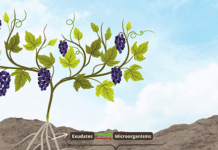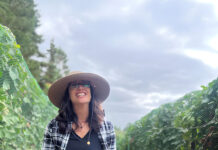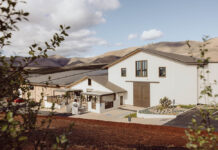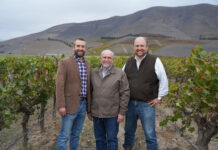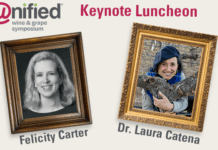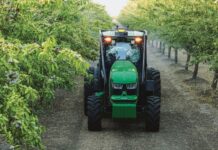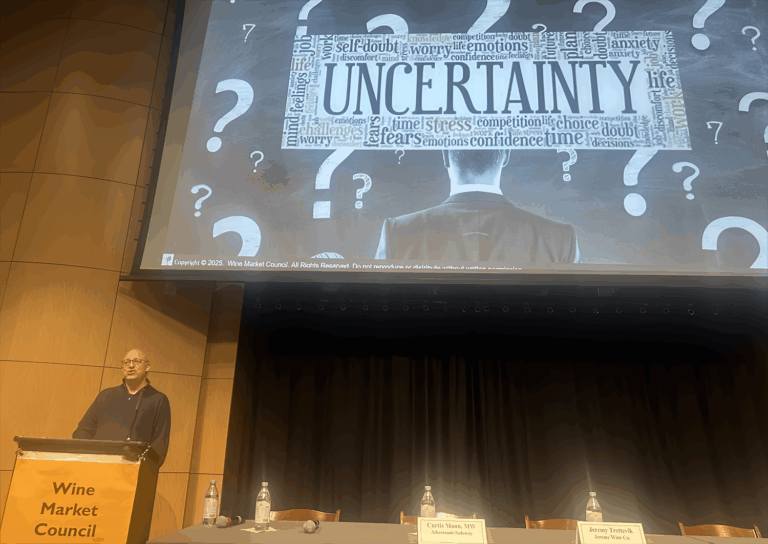
Listen to the audio version of this article (generated by A.I.)
A large dose of reality and a spoonful of medicine: That’s what speakers at the Wine Market Council’s (WMC) Annual Research Conference and member meeting on April 2 at Copia in Napa delivered to the 200 attendees. The morning meeting featured both positive and negative news on the overall wine market from former NielsenIQ Wine Analyst Danny Brager and other speakers.
The speakers wrapped up their presentations just hours before President Donald J. Trump announced new tariffs on South African wines (30%), Israeli wines (17%) and European wines (20%).
Lower-priced wines (under $15) showed sales declines, but on the bright side, wines priced above $15 saw sales increases. Interest in white wines was also up, and one-third of wine brands in off-premise and direct-to-consumer (DTC) channels experienced increased sales, Brager said.
Smaller bottle sizes (375 milliliters) were also increasing in double digits, he added, which echoed findings from recent WMC studies. “Better for you” brands also performed well, Brager said.
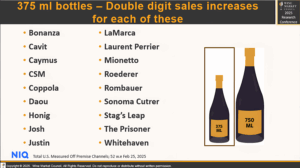
In-Depth Data Study Summaries and Takeaways for Marketers
WMC leaders Dr. Liz Thach, MW, president, and Christian Miller, research director, recapped findings from deep-dive studies on multicultural and younger consumers in their 20s and 30s as well as on eco-friendly wines.
Though the studies found younger consumers like wine, they are overwhelmed by beverage choices, wine complexity and a lack of perceived wine occasions, Thach said.
Survey data also showed nearly half of wine consumers in their 20s buy wine in alternative formats, with 48% purchasing 175-milliliter or 325-milliliter bottles as well as cans, a slight increase over those in their 30s. Roughly 30% of both groups purchased wine in 3-liter or 5-liter bag-in-box packaging.
Their taste preferences tend to fall into two camps: sweet, fruity and refreshing versus intense, dry, oaky and full-bodied.
Multicultural consumers prefer to see their food and people from their cultures reflected in brands. Thach recommended hiring for diversity and showcasing it in brand social media and marketing visuals.
Research also showed that younger legal-drinking-age consumers want store retailers to better organize wines on shelves like the filtering systems used in online shopping. Thach suggested bringing back in-store tastings where legally allowed. In on-premise settings and tasting rooms, she recommended offering at least one wine cocktail and displaying wine cocktail recipes.
Younger consumers also mentioned they enjoy using AI quizzes online to help them find the right wine. The takeaway for marketers is to offer website filters, include user ratings and feature interactive tools like quizzes and games to guide wine selection.
Both Gen Z (ages 21 to 26) and millennials (27 to 42)
use Instagram, YouTube and TikTok as their top social media platforms.
Overall, key concerns for marketers centered on delivering more positive messaging about wine and health and emphasizing wine’s romantic and lifestyle appeal, especially for younger consumers.
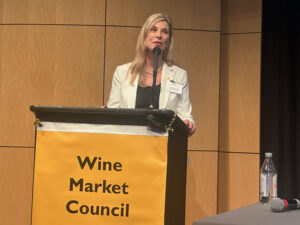
Panel: “How to Sell More Wine in Multiple Channels”
The second half of the event featured a panel discussion with sales channel representatives offering wineries tips to improve wine sales:
• Off-premise retailers: Curtis Mann, MW, Albertsons-Safeway, and Alex Joerger, Wine.com
• On-premise: Michael Gonzales, wine director, Cole’s Chop House
• DTC wineries: Laura Webb, Cakebread Cellars (Napa), and Jeremy Trettevik, Jeremy Wine Co. (Lodi)
Albertsons-Safeway
Mann said sending beverage stewards to train at the Napa Valley Wine Academy was effective in increasing wine sales. He encouraged wineries to rethink their labels and simplify language and visuals to make wine more accessible. He also supported bringing back in-store wine sampling where allowed. The company’s Vine and Cellar website was recently upgraded with improved filters to promote wine discovery.
Wine.com
Joerger reported Wine.com receives 24 million page views and the average customer purchase is $32 per bottle. The site offers a $59 annual membership for free shipping and features cost-effective brand pages that showcase winery photos and product listings. Joerger recommended attending the Wine.com annual seller event, held in February, to take advantage of promotional tools.
Cole’s Chop House
Gonzales said younger customers expect a higher level of attention and service with their dining experience. Offering a strong by-the-glass program using Coravin helps. The wine list includes at least 26 Cabernet Sauvignon options by the glass, including Joseph Phelps 2018 Insignia.
Cakebread Cellars
Webb noted a rise in last-minute visitation requests and said the winery is working on ways to accommodate these guests without overburdening staff. She emphasized the need to move beyond the mindset of “this is how we’ve always done it” and embrace flexibility. Thach reinforced that it is no longer acceptable to turn customers away. Mann himself had been turned down at three wineries, Thach said. The audience gasped. “Don’t turn people away,” she told them.
Jeremy Wine Co.
Trettevik of Lodi-based Jeremy Wine Co. said wine tastes by the glass at the bar are more effective than formal flight tastings. The casual bar format creates more interaction with staff, which can drive sales without requiring additional staffing.
Wine Market Council members have access to additional research and data through the organization’s website at winemarketcouncil.com.


